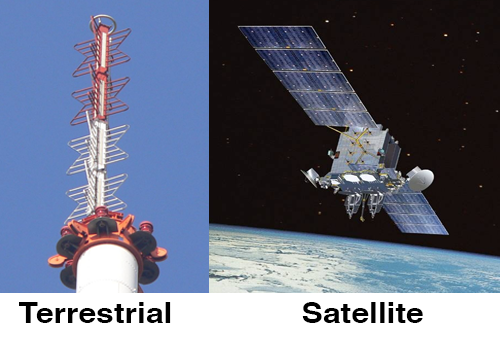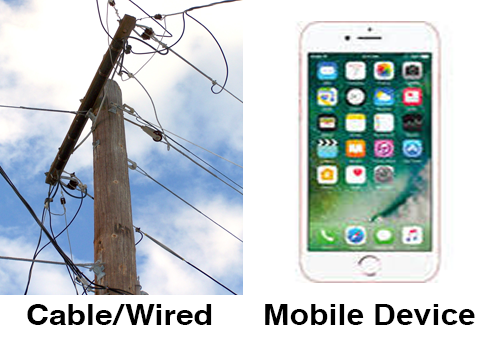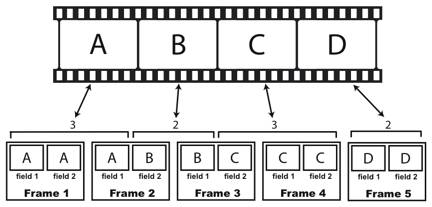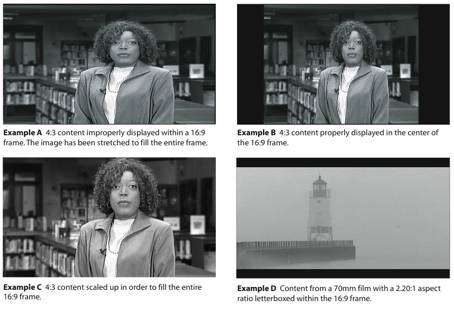Jim Krause | Classes | P356 TV Studio Production
Week 13
Agenda
- Final Project Pre-Production work due this week - moved deadline back to Friday to give all groups a chance to complete this.
- DTV Signal / Distribution
- PSAs: If you haven't done so already finish up the follow-through work with your PSAs this week.
- The Budget/Remote assignment is not due but we'll work through the process.
- The Spring 2019 final exam (scheduled by the Registrar) is Friday, May 3 from 10:15 AM - 12:15 PM in Studio 5. (It likely will take 30-45 minutes.) However, we can have a final project review session during our normally scheduled lecture time, Monday April 29 from 12:20-1:10 PM.
Readings:
- Cybercollege DTV standards
Field Production & Big Remotes / Covering major events
Sports Remotes - Crews can be very large - more than 100 people are needed for a major sports event.
Check out the floor plans for the various events in the Zettl book. Always remember a solid establishing shot and adhering to the 180 degree rule. Mics that have to pick up sound from a long distance are typically shotgun and/or parabolic.
Be prepared to make/complete a location sketch for a major event. You will have to decide where to place the cameras and microphones and explain your reasoning.
Signal transport & delivery
Programming can be delivered to subscribers in four ways:
- Terrestrial broadcast
- Satellite (Direct TV, DISH, etc.)
- Cable/Wired (ATT, Comcast, etc.)
- Mobile (Cell phone networks such as Verizon, ATT, Sprint, etc.)


Terrestrial TV stations broadcast radio waves in the electromagnetic spectrum.
Use of the electromagnetic spectrum is overseen by the FCC (Federal Communications Commission). It's used by television, radio, the military, cell phone companies, and even your garage door openers.
Digital Television (DTV) - Analog broadcast ended February 19, 2009. The ATSC (Advanced Televesion Systems Committee) is the organization that developed and guides DTV broadcast standards.
DTV Formats:
- 1080 i and p (24, 30 & 60 fps. 16 x 9) 1920 x 1080
- 720 i and p (24, 30 & 60 fps. 16 x 9) 1280 x 720
- 480 i and p (24, 30 & 60 fps. Both 16 x 9 and 4 x 3)
(i = interlaced, p = progressive)
Satellite - All geosynchronous communication satellites orbit the earth above the equator 22,236 miles / 35,786 km above the earth). All of the downlink satellite dishes you see are pointed towards the south (somewhere over the equator).
Satellites used for broadcast are either C or KU band. KU band dishes can be smaller (2 feet). Direct broadcast satellites or DBS (such as DISH or DirectTV) operate on the KU band.
- Uplinks (send to satellite)
- Downlink (receive)
- Transponder - a combination receiver/transmitter found in the communication satellites.
Microwave transmission - Power & size varies. Very small, focused signal. Don’t stand in front of one! Can go from camera to truck, truck to relay station, truck to satellite, or directly to the station.
Cable/Wired-based - Twisted pair, Coaxial & fiber-optic.
Compared to cable or fiber-optic, twisted pair (E.g. traditional phone line) is capable of carrying the least amount of information. Most cable companies started out with coaxial cable. Most now are using fiber-optic, which is capable of carrying more information.
- Headend - origination point/control center of the cable system.
- Trunk-line- primary distribution (fiber-optic or coaxial)
- Feeder lines- secondary distribution (through blocks/neighborhoods, etc)
- Drop lines- cables to homes or businesses
- Multicast - delivery of information to a multiple destinations simultaneously
- VOD - Video On Demand
- SDV - Switched Digital Video - A method of broadcasting only channels that are currently tuned, rather than every channel offered at once.
Mobile/Cell Distribution - The widespread use of portable devices has prompted providers to offer content for mobile customers. Television distributed over cell phone networks and viewed on portable devices.
Convergence - These have been interesting times, as cable companies are now offering phone service and phone companies are offering TV.
Many consumers are giving up monthly cable/satellite packages, tuning in to TV programming via the Internet. It's possible to get a great deal of free programming, which is usually interspersed with commercials. (Sound familiar?)
World TV Standards & Digital TV
NTSC (National Television Systems Committee) definition of standard definition TV, (used in North America, some of South America, Japan, etc) uses a frame rate close to 30, roughly 29.97 frames per second. There are 525 scan lines; approximately 480 of these are visible. The HD (high definition) standard for broadcast has been created by the ATSC, the Advanced Television Systems Committee, which was formed at the urging of the FCC to establish standards for the new high definition formats.
PAL (Phase Alternate Line) is used in most of Europe, Australia, & Asia and runs at 25 frames per second using 625 lines.
SECAM (Sequential Color and Memory)
Here in the US, the NTSC analog standards are still being used by legacy gear. However all of the new digital broadcasting and distribution follow the ATSC guidelines.
ATSC - A number of industry associations, corporations, and educational institutions formed the Advanced Television Systems Committee (ATSC) in 1982. The ATSC is a not-for-profit organization that develops voluntary standards for advanced television systems (www.atsc.org). Such advanced systems include enhanced analog TV, digital TV (DTV), standard definition TV, high-definition TV, and data services. The ATSC’s published broadcast standards are voluntary unless adopted and mandated by the FCC.
In December 1996, the FCC adopted most of the standards proposed by the ATSC, mandating that broadcasters begin broadcasting digitally.
Converting 24p video & film to interlaced 60i video
When converting film or 24p video to 30/60i (29.97) video we use a 3:2 Pulldown
See
Film runs at 24 frames per second.
24p refers to video shot at 24 frames per second progressive- that means there are no fields.
Since film runs at 24 fps and video runs about 30 interlaced fps, the two aren't directly interchangeable at least on a frame for frame basis. (To be more precise, 23.976 film frames become 29.97 video frames.) In order to transfer film to 30 fps video, the film frames must be precisely sequenced into a combination of video frames and fields.
A telecine is a piece of hardware containing a film projector sequenced with a video capture system. The telecine process is a term used to describe the process of converting film to video, also called a 3 2 pulldown. In the 3-2 pulldown each frame of film gets converted to 2 or 3 fields of video.
Note how four (24p fps) frames are converted to five interlaced frames (30i fps).

The problem with converting film frames to fields, is that some video frames have fields from two different film frames. If you think about it you'll see that this can present all types of problems.
DTV (Digital TV broadcasting)
A number of industry associations, corporations, and educational institutions formed the Advanced Television Sysems Committee (ATSC) in 1982. The ATSC is a not-for-profit organization that develops voluntary standards for advanced television systems (www.atsc.org). Such advanced systems include enhanced analog TV, digital TV (DTV), standard definition TV, high-definition TV, and data services. The ATSC’s published broadcast standards are voluntary unless adopted and mandated by the FCC.
In December 1996, the FCC adopted most of the standards proposed by the ATSC, mandating that broadcasters begin broadcasting digitally. According to the ATSC, within one year of the November 1, 1998 rollout, more than 50 percent of the US population was in a position to receive digital broadcasts. During a transitional period, television would be broadcast both digitally under the FCC’s digital terrestrial television (DTT) guidelines and through traditional analog means. At the present time, Congress has voted to terminate analog broadcasting by February 2009, though the deadline could be extended.
You can squeeze 4 SD programs in the same space used to broadcast one HD program.
Both use MPEG-2 compression.
Digital TV Systems:
- 480p uses only 480 lines scanned at 60 frames per second (good but not HDTV)
- 720p uses 720 lines at 60 frames per second
- 1080i uses interlace scanning (each field has 539.5 lines)
Further resources:
SD vs. HD
Standard definition television (SDTV) can use either the 4:3 or 16:9 aspect ratios, HDTV always uses the 16:9 aspect ratio.
HDTV/SDTV |
Horizontal lines |
Vertical lines |
Aspect Ratio |
Frame Rate |
SDTV |
640 |
480 |
4:3 |
23.976p, 24p, 29.97p,
30p, 59.94p, 60p, |
SDTV |
704 |
480 |
4:3 and 16:9 |
23.976p, 24p, 29.97p,
30p, 59.94p, 60p, |
HDTV |
1280 |
720 |
16:9 |
23.976p, 24p, 29.97p, 30p, 59.94p, 60p |
HDTV |
1920 |
1080 |
16:9 |
23.976p, 24p, |
Beside having more pixel resolution, HD can display much more information in terms of color and brightness.
HDTV
While HDTV content is designed to fill a 16:9 frame, the display of programming from other sources with varying aspect ratios is also possible. Programs shot in the 4:3 aspect ratio or in wider, cinematic formats can easily be displayed inside of a 16:9 frame without distortion by shrinking the image. Unfortunately it’s quite common to see broadcasters delivering images with the improper aspect ratio (Example A of figure 2.3). Traditional, 4:3 content is ideally viewed on widescreen displays by presenting the image as large as possible, centered within the frame. (Example B) This is sometimes referred to as pillar boxing. This allows the original image to be seen as it was intended. Some broadcasters magnify the 4:3 image so that it fills the entire 16:9 frame. (Example C) This can often be identified by the lack of headroom. Content from cinematic formats with wider aspect ratios can be accurately displayed within the 16:9 frame with letterboxing. (Example D) It’s also frequently necessary to present widescreen programming inside of traditional 4:3 displays with letterboxing.

Content with varying aspect ratios
displayed within a 16:9 frame.
Terms & abbreviations you should know:
- ENG
- EFP
- SNG
- Big Remote
- Metadata
- NTSC
- PAL
- SECAM
- ATSC


